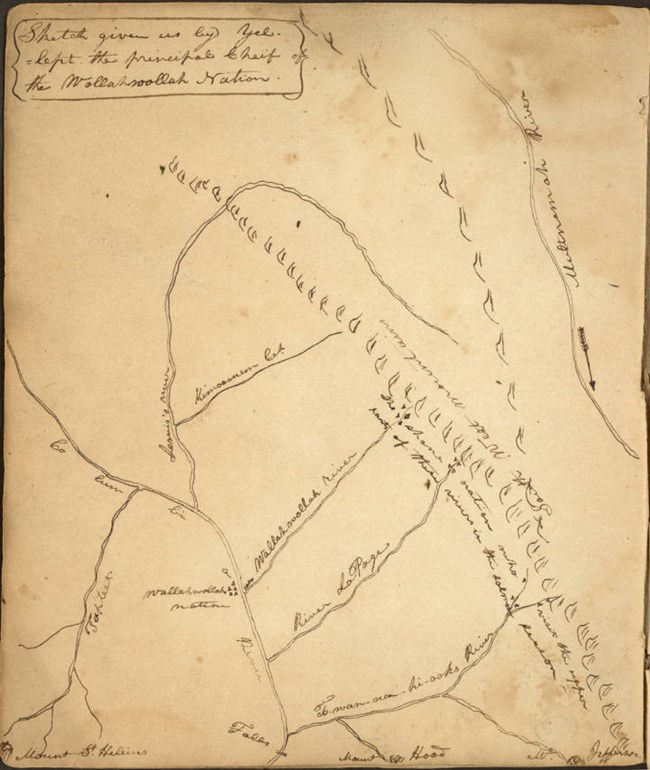Last updated: June 6, 2023
Article
Yellept of Walla Walla

Within the collection of The State Historical Society of Missouri.
William Clark described him in his October 1805 journal entry as “a bold handsom Indian, with a dignified countenance about 35 years of age, about 5 feet 8 inches high and well perpotiond.”
It is unlikely that Yellept was his actual name. According to Sahaptin Yakama Dialect Practical Dictionary, Yalípt is a Sahaptin word that means “trading partner.” The Oregon History Project describes this word as “a formal social relationship among Plateau peoples whose economy was based in large part on trading, gifting, and other forms of exchange.”
When the Corps of Discovery members were exhausted and hungry as they slowly moved against the strong current of the Columbia at the end of April 1806, they were met by the chief and six others. The Corps would spend three days with the Walla Wallas and a group of nearby Yakamas. The tribe’s hospitality and kindness made a lasting impression on the Captains. Lewis would write that Yellept was “a man of much influence not only in his own nation but also among the neighbouring tribes and nations,” and the Walla Wallas are “friendly honest people.”
Lewis and Clark received much more than hospitality and friendship from the chief – he shared with them an overland shortcut that would reduce their route to the Nez Perce homelands (where the Corps’ horses were being held) by at least 80 miles.
When the Corps departed on April 29, they began trekking across southeastern Washington on a well-used Native American trail. Two days later, three young men from Yellept’s village caught up with the party just to return a steel trap that one for the soldiers had left behind. “I think we can justly affirm to the honor of these people that they are the most hospitable, honest, and sincere people that we have met with in our voyage,” wrote Lewis on May 1, 1806.
